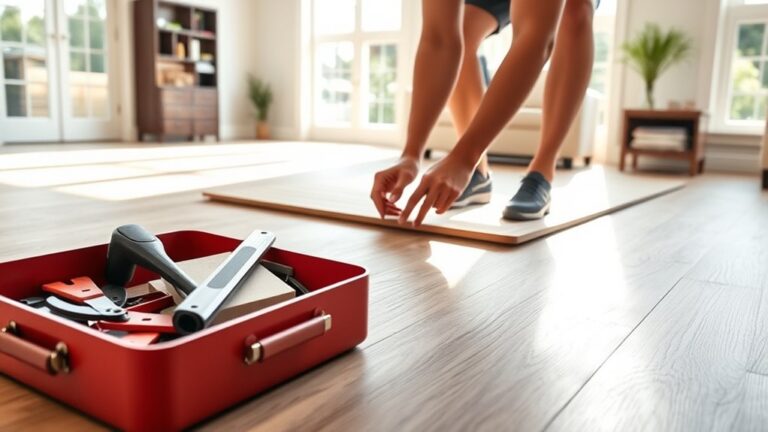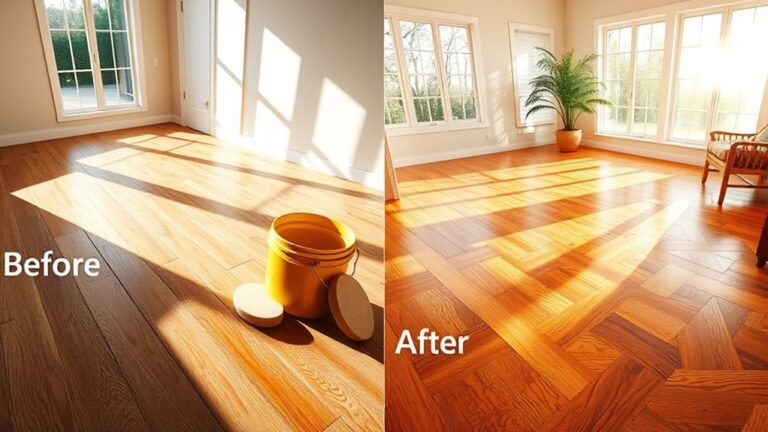To fix an uneven shower floor, you need to level it using a self-leveling compound and then install a new shower floor over the leveled surface. An uneven shower floor can be a major inconvenience as it can cause water pooling and drainage issues.
Additionally, it can also be a safety hazard, especially for individuals with mobility issues. Therefore, it is important to address the problem and fix the uneven shower floor as soon as possible. One of the most effective ways to fix an uneven shower floor is by using a self-leveling compound.
This compound is specifically designed to level uneven surfaces, providing a smooth and even base for the shower floor. Once the self-leveling compound has been applied and allowed to dry, you can then proceed to install a new shower floor material, such as tiles or a prefabricated shower pan. By following these steps, you can easily fix an uneven shower floor and restore functionality and safety to your bathroom.
Step 1: Assess The Shower Floor Condition
Inspect for any visible signs of unevenness. Look for any cracks, depressions, bumps, or tilted tiles. These are indications of an uneven shower floor. Next, check for water pooling or low spots. A leveling issue can cause water to collect in certain areas, leading to drainage problems and potential damage.

Recognizing The Causes Of An Uneven Shower Floor
Recognizing the Causes of an Uneven Shower Floor
- Foundation Settlement: Uneven shower floors can indicate foundation settlement. Over time, the ground beneath the shower may shift due to factors such as soil erosion or inadequate soil compaction.
- Water Damage: Water damage can also cause an uneven floor. Leaking pipes or insufficient waterproofing can lead to subfloor damage and flooring warping, resulting in an uneven surface.
- Installation Mistakes: Poor installation can be another cause. If the shower pan isn’t properly leveled or the tiles aren’t laid evenly, it can lead to an uneven surface.
- Inspect the Foundation: Check for signs of foundation damage, such as cracks in walls or uneven doors. Consult a professional if necessary.
- Look for Water Leaks: Check for any water leaks beneath the shower or adjacent areas. Damp spots or mildew growth can indicate a problem.
- Examine Installation Quality: Examine the shower installation, ensuring the shower pan is level and the tiles are properly laid. If necessary, consult a professional or the installer for assistance.
- Foundation Repair: If the unevenness is due to foundation settlement, foundation repair may be necessary. A professional can assess the extent of the damage and recommend appropriate solutions.
- Addressing Water Damage: Fixing any water leaks and addressing the subfloor damage is essential for resolving an uneven shower floor. Consult a plumber or water damage restoration specialist for assistance.
- Proper Installation: If installation mistakes are the cause, reinstalling the shower pan or correcting the tile installation can help achieve a level surface. Seek professional help if needed.
Step 2: Gather The Necessary Tools And Materials
Step 2: Gather the Necessary Tools and Materials
- Ensure you have the required materials
Before starting the repair, it is important to gather all the necessary tools and materials that will be needed. This will help streamline the process and ensure that you have everything you need within arm’s reach.
Firstly, you will need a floor leveling compound specific for your type of shower floor. Make sure to read the instructions on the packaging to determine the amount required based on the size of the area that needs to be fixed.
Next, gather a trowel or a putty knife for spreading the leveling compound evenly across the surface. This will help smooth out any indentations or uneven areas.
You may also require sandpaper or a sander to sand down any rough spots on the shower floor before applying the leveling compound. This will ensure a clean and smooth surface for the compound to adhere to.
Lastly, don’t forget safety gear such as goggles and gloves to protect yourself during the repair process.
Tips For Choosing The Right Repair Materials
When fixing an uneven shower floor, it is essential to select the appropriate materials that will provide a durable and long-lasting solution. Consider the type of shower floor you have before making a decision. Some common types include tile, fiberglass, and acrylic.
| Type of Shower Floor | Suggested Materials |
|---|---|
| Tile | Epoxy or cement-based grout, thin-set mortar |
| Fiberglass | Fiberglass repair kit, marine-grade filler |
| Acrylic | Acrylic repair kit |
For tile shower floors, it is important to use epoxy or cement-based grout as well as thin-set mortar to ensure proper bonding and stability. Fiberglass shower floors require a specialized repair kit and marine-grade filler to fix unevenness effectively. Acrylic showers, on the other hand, can be repaired using an acrylic repair kit specifically designed for this type of material.
By selecting the right materials based on your shower floor type, you can effectively fix unevenness and restore the functionality and aesthetic appeal of your shower.
Step 3: Leveling The Shower Floor
Before beginning the repair process, it is important to take necessary precautions to ensure a safe and effective outcome. Start by removing any existing flooring or tiles to reveal the underlying shower floor. This might involve prying up or scraping away the old materials, so be sure to wear appropriate protective gear such as gloves and goggles.
Once the old flooring or tiles are removed, you can assess the condition of the shower floor. Check for any cracks, unevenness, or areas of disrepair that may need attention. It is essential to have a level and sturdy shower floor for proper drainage and safety.
If you notice any significant issues, consult a professional to address the problem. They will be able to advise you on the best course of action, whether it involves patching up cracks, releveling the floor, or potentially replacing the entire shower base.
By carefully preparing the shower floor and seeking professional advice when needed, you can ensure a successful repair and enjoy an even and sturdy shower floor for years to come.
Leveling Techniques For Different Types Of Shower Floors
Is your shower floor uneven? Uneven shower floors can be not only unsightly, but also pose a safety hazard. Thankfully, there are various leveling techniques that can help you fix this issue and regain a level and stable shower floor.
If your shower floor is made of tile, you can use a self-leveling compound to even out the surface. This compound is poured onto the floor and automatically spreads to create a smooth and level finish.
For fiberglass or acrylic shower floors, you can try using shims. These small, wedge-shaped pieces can be placed underneath the shower floor to lift and level it.
Concrete shower floors can be leveled using a concrete resurfacer. This material is poured over the existing floor and smoothed out to create a level surface.
No matter the material, it’s important to accurately measure and assess the level of your shower floor before applying any leveling technique.
Implementing the appropriate technique for your specific shower floor can help prevent future issues and ensure a safe and enjoyable showering experience.
Step 4: Applying The Repair Solution
To fix an uneven shower floor, the fourth step is to apply the repair solution. Start by mixing the repair compound according to the instructions provided. Make sure to follow proper techniques when applying the solution.
Curing And Drying Time For The Repair
Understanding the time required for the repair to set is crucial when fixing an uneven shower floor. After applying the repair material, it is important to allow sufficient drying time for a smooth finish. The exact curing and drying time will depend on the type of repair material used. For most epoxy-based products, it is recommended to leave the repaired area untouched for at least 24 hours. This allows the material to fully cure and bond with the existing shower floor. It is essential to follow the manufacturer’s instructions for specific drying times as they may vary. Rushing the process by stepping on the repaired area too soon can result in an uneven finish or even damage the repair. Patience is key when it comes to achieving a proper and long-lasting fix for an uneven shower floor.
Step 5: Finishing Touches For A Seamless Shower Floor
After rectifying the uneven shower floor, the final step is to reinstall the flooring or tiles. This process involves ensuring proper sealing and adding the finishing touches for a seamless result. Start by applying a high-quality waterproof sealant to the newly leveled floor. This step is crucial, as it will prevent any water damage and potential mold growth in the future.
Once the sealant has dried, proceed with reinstalling the chosen flooring or tiles. Take note to follow the manufacturer’s instructions carefully to achieve the best results. Ensure that the tiles are placed evenly and securely, paying attention to any grout lines or interlocking mechanisms. Having a smooth and flat surface is key to an even shower floor.
Finally, finish off the project by thoroughly cleaning the shower area and inspecting it for any remaining imperfections. Make any necessary adjustments or touch-ups to guarantee a flawless finish. Taking the time to complete these final steps will ensure a long-lasting and beautiful shower floor that is both safe and functional.
Maintaining A Level Shower Floor
To fix an uneven shower floor and ensure optimal condition, it is important to maintain a level surface. Here are some maintenance tips to prevent future unevenness:
- Regular Cleaning: Clean your shower floor regularly to remove any dirt or debris that may cause unevenness. Use non-abrasive cleaners to avoid damaging the surface.
- Inspect for Leaks: Check for any leaks in the shower area as water can seep under the floor and cause unevenness over time. Resolve any leaks promptly to prevent further damage.
- Repair Cracks: If you notice any cracks or damage on the shower floor, repair them immediately. Ignoring such issues can lead to further unevenness and potential hazards.
By following these maintenance tips, you can keep your shower floor in optimal condition and prevent future unevenness. Remember to address any issues promptly to ensure a safe and level shower experience.
Frequently Asked Questions For How To Fix Uneven Shower Floor
How Do You Fix A Low Spot In A Shower Floor?
To fix a low spot in a shower floor, follow these steps: 1. Remove the existing tiles or flooring. 2. Fill the low spot with a leveling compound or mortar mix, smoothing it out with a trowel. 3. Allow the compound or mortar to dry completely.
4. Reinstall the tiles or choose new flooring options. 5. Ensure proper drainage by sloping the repaired area towards the drain.
How Do You Fix An Uneven Shower Tray?
To fix an uneven shower tray: 1. Remove the tray carefully. 2. Adjust the height by adding or removing support under the tray. 3. Use a spirit level to ensure the tray is level. 4. Secure the tray in place with adhesive or screws.
5. Check for leaks and make necessary adjustments if needed.
How Do You Level A Shower Base?
To level a shower base, follow these steps: 1. Check for any gaps or uneven areas. 2. Use a leveling compound to fill in low spots. 3. Ensure the base is level by using a spirit level. 4. If necessary, adjust the feet or legs of the base.
5. Double-check the level before proceeding with the shower installation.
Can A Shower Floor Be Level?
Yes, a shower floor can be level. Leveling the shower floor ensures proper drainage and prevents water pooling. It is important to have a level surface to maintain a safe and functional shower experience.
Conclusion
Fixing an uneven shower floor is crucial to avoid water accumulation and potential damage. By following the steps discussed in this guide, you can restore your shower floor’s stability and ensure better drainage. With proper preparation, leveling techniques, and the right materials, you can create a safe and even surface that enhances both functionality and aesthetics.
Don’t let an uneven shower floor dampen your bathing experience – take action and enjoy a smooth and stable shower space.




